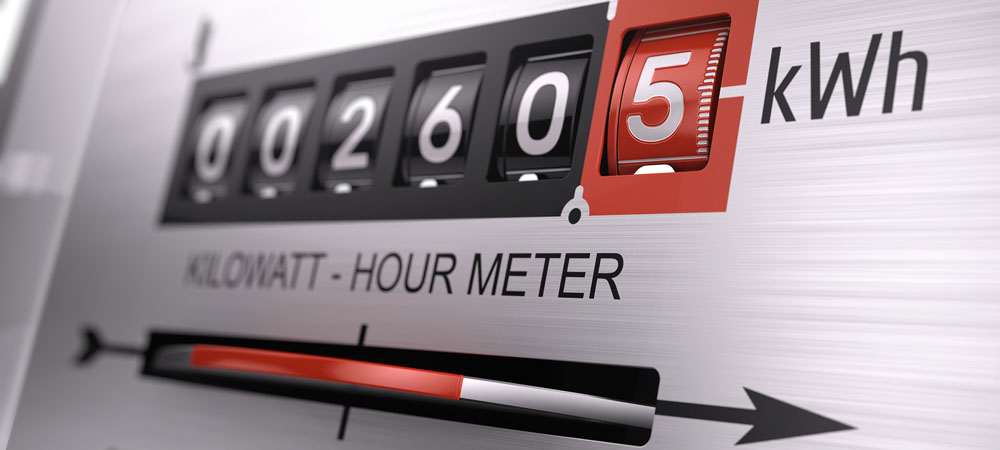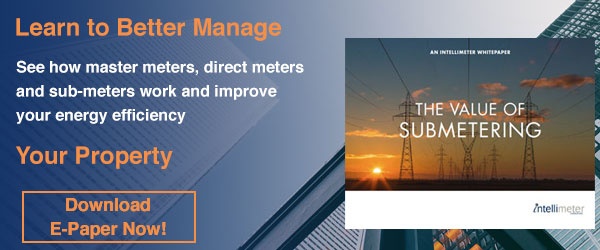Any increase in electricity bills raises questions on how and where that extra energy was consumed. Being energy efficient saves costs and provides many other benefits. It is good for the environment as it reduces the carbon footprint, it enhances the quality of life and gives the owner satisfaction in making the world a better place for all. Over consumption negatively impacts your pocket as you would likely pay more for what you may not really need, it also impacts our energy resources and produces emissions that harm our planet. Finding solutions to improve our energy consumption fosters more positive habits.
Installing Electric sub-meters is one of the easiest place to start. They enable the gathering of detailed real-time energy consumption – for the entire facility and for individual pieces of equipment. Everything is tracked and therefore, with better knowledge, better decisions can be made.
How Do We Measure Electrical Usage?
Energy used is measured in kWh (kilowatt hours). This is called Active power which, in an ideal installation with a power factor of 1, is the instantaneous product of voltage and current and represents the capacity of the electricity for performing work. The product of the amperage times voltage in an electrical circuit is called a watt – 1 amp x 1 volt = 1 watt.
Adding the time factor it measures the actual energy usage. Thus, we can define electrical usage as the measurement of watts consumed over a specific period. For instance, in an ideal world where Power Factor is 1; A 100-watt light bulb that works for 10 hours will consume; 1 kWh or 1,000 watts (100 watts x 10 hours)
Now not all loads consume current the same way creating an imbalance between the Voltage and Current, called Power factor. Power Factor is a measure of efficiency, a load with a Power factor of one (1) is more efficient than a load with a power factor of 0.75. Electrical Sub-Meters sample the Voltage and the current at the same time and record the data with a time stamp. and then measure the difference over time periods to obtain KWh. and KVA which is known as Apparent Power. The ratio of Real Power over Apparent Power is the Power Factor.
Most Electric Utilities charge fees for low Power Factor, in domestic use or small contracted services, the rate already includes the Power Factor cost. an customers are only billed KWh.
Electrical Sub-meters
The electric sub-meters found on many facilities are varied but can be grouped into one of two types:
- Pulse Output meters – These meters produce a pulse for every watt-hour consumed. These pulses are transmitted to a data logger where pulses are logged and stored. Because the pulses only represent a magnitude (of KWh, KVAh or KVARh) they have limitations in providing additional consumption information, and are preferably used in smaller applications where the only purpose is to meter consumption.
- Serial Communication Meters –Provide data in different digital formats and can provide additional metered parameters in addition to recording energy consumption.
The most advanced solid-state electric meters are digital, which means that they work with digital microprocessors that capture the consumption information in real time, with additional parameters like; Voltage, Current, Frequency, Power Factor and Harmonic Distortion are available to the user for viewing and analyzing the quality of the electrical source.
Serial communication allows all the sub-meters in a facility a common communication bus to a Data Collection Unit (DCU) that manages the reading of the metered values by each sub-meter; The DCU can be programmed to automate the process in a similar fashion as the Automated Meter Reading (AMR) technology available with large utilities. The readings are then processed in a central data base where the data can be used for billing, troubleshooting, and analyzing. Technology today allows serial communication chains to be either wired or wireless.
Furthermore, the data-base and the support software can reside in the cloud, making the information available to the manager, the owner or the user at any time from almost any internet connected device. Imagine getting quick answers to an increase of energy usage on any given month- from tenants to specific pieces of equipment - with just a click on your screen. Insightful data such as this will go a long way in managing your energy bills for your business.
Which Data Should You Collect and Store?
When developing a plan and budgeting for electrical sub-metering, determining the type and the amount of data to collect and at what frequency is the key to an ideal operating Sub-metering System. Too much information may slow down the serial communication line, requiring additional chains or dividing the system into multiple smaller sub-systems. In a similar fashion, too much data, will require more processing capabilities in the DCU and larger memory.
Consulting with a professional in sub-metering helps the user understand the needs and wants, select the right sub-metering configuration, software, frequency and data types, and analyze what is needed to achieve the planned operational goals. In the end an experienced sub-metering company will assist and help you find the ideal balance for superior performance and fair value.


